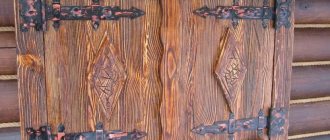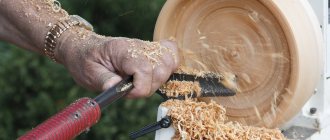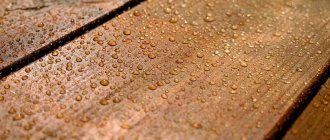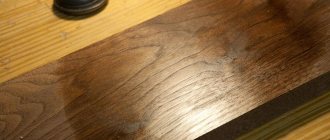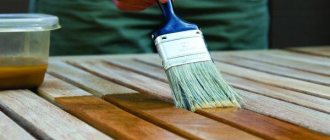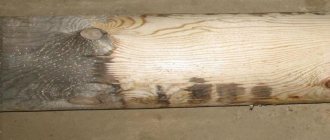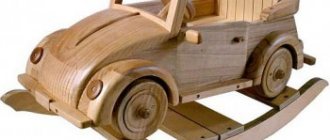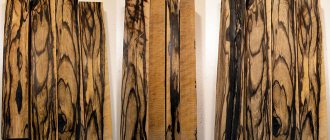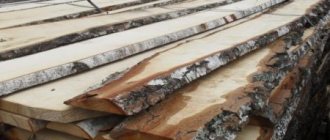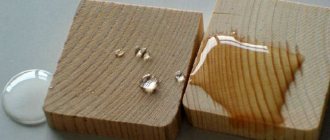Process waxing wood has gained particular popularity recently. Let's figure it out, is this a fashion trend or a necessity? Wood, throughout its use, requires protection from the harmful effects of the environment or biological organisms. Varnishes and stains help with this, but they contain many chemical elements, the release of which into the air is not desirable for the human respiratory tract. It is better to use an alternative option - beeswax or vegetable wax.
Properties of wax
Wax is used not only in medicine, cosmetology, but also in industry. Beeswax consists of esters, fatty acids, hydrocarbons, which have good water-repellent properties. When heated to +20 degrees, the density of the substance decreases. Its color does not affect the properties.
Best qualities of wax:
- fire resistance;
- wood strengthening;
- protection from moisture;
- improving the appearance of the material;
- moisture removal;
- brilliant appearance.
You can make a solution for treating wood with wax yourself or buy a ready-made product in the store.
Previously, wax dissolved in turpentine was used as a processing composition. This is a reliable remedy, but it has a serious drawback - turpentine smells unpleasant. Its smell finally disappears after about two years.
After the material is treated with wax, the appearance is transformed, minor scratches are erased, and a pristine shine appears.
Wax impregnation for wood is an important element, as it helps prevent rotting, burning and fungal formations. Wax is considered the best means of protection against chemical and other influences on wood. Thanks to its protective properties, the tree does not lose its appearance and retains its structure and pattern for a long time. The surface becomes velvety and pleasant to the touch.
Waxing materials
Waxing wood is considered one of the best ways to treat surfaces. Such protection is quite reliable and inexpensive. You can find colored wax on sale that allows you to add the desired color to the wood. Any wood can be impregnated with wax. For high-quality wood processing you need to purchase:
- sandpaper;
- wax;
- knife;
- solvent;
- hard brush;
- cloth;
- brush.
Wood fibers dry out over time, so this impregnation will perfectly preserve the product and prevent external factors from affecting it.
Conclusion
Currently, there are many technologies for protecting wood from the effects of various negative factors. Each of them has its own characteristics, and also gives the tree a certain look. Therefore, the choice depends on individual preferences and the characteristics of the operation of the wooden structure, so in one case the best option may be painting, and in another, treating the wood with paraffin.
You can get some additional useful information on this topic from the video in this article.
Waxing process
How to treat wood with wax? Here are the detailed instructions:
- It is necessary to get rid of the old coating by removing the residue with a solvent, and then get rid of the remaining solvent using warm water. If large pieces of old varnish remain, you need to remove them using a carpenter's knife and sand them with sandpaper. To get rid of varnish from the cracks, you need to walk over the surface to be treated several times with a stiff brush. After all procedures, the surface will become even and smooth, ready for waxing.
- Be sure to apply wax only to a dry surface using a special cloth. First, you need to treat a flat surface, and then move on to cracks, corners and other elements. You can use a brush. Correct impregnation is carried out along the fibers.
- After the process is completed, you need to give it an hour to dry. When the wax is completely absorbed, remove the excess with a rag. It is necessary to ensure that the wax penetrates into all crevices and hard-to-reach areas. This will give strength and durability. To get the shine effect, the wood needs to be processed twice. If a film begins to form, use a stiff brush.
It should be remembered that the work must be done carefully so as not to damage the product. Impregnation will allow the wood to sparkle in a new way, protect it from external factors, and add shine.
The waxing process itself does not require special knowledge, however, the algorithm of actions must be followed, otherwise the effect will not be noticed. It is almost impossible to damage furniture using this method. Waxing wood not only preserves its properties for a long time, but also gives it the appropriate appearance. External factors have less impact on its integrity, which allows you not to worry about the service life of the product.
In rare cases, shellac varnish is added to the wax coating. It is able to consolidate the result and add shine.
Three, screwing, varnishing
Polishing different types of surfaces - untreated, painted or varnished - has its own nuances. You will definitely need special substances and devices to achieve good results. In general, the process involves applying several layers of varnish, followed by drying and sanding each but the last.
Sand each crevice
A job done brilliantly
Before polishing varnish on wood, you need to prepare polish, pumice, a swab/velor roller (ideally a spray gun), and denatured alcohol.
- Polish is thickly applied to a dry varnished surface with a swab and polished with pumice until shiny.
- After 3 days of drying, a second layer follows to level out roughness and is left to dry for 5 days.
- The third portion of polish is applied.
- Polishing with alcohol is carried out to a mirror shine.
Old beautiful furniture definitely needs, if not repair, then restoration of the varnish layer, which is wiped out and becomes covered with bald patches.
The restoration process includes the following surface treatment steps:
- Removing the old varnish layer using ammonia, denatured alcohol, turpentine or other solvent.
Note! Polishing varnish after painting involves the use of toxic substances - do not forget to protect yourself as much as possible. Don't neglect gowns, gloves, goggles, and respirators or gauze dressings.
Health comes first
- Processing with coarse and then fine-grained sandpaper.
- Rub in the filler (in a circular motion).
- Treat with stain several times, allowing each layer to dry completely.
- Direct polishing of varnish on wood - with wax, varnish (in several layers, each is dried, sanded; do not sand the last layer).
Technologies from time immemorial
I wonder how, in ancient times, woodcarvers, carpenters, and architects managed to preserve their products from moisture and drying out? The secrets of distant ancestors have survived to this day and naturally fit into modern production.
It has long been known how to polish wood with wax, which gave the product a soft, calm glow and was guaranteed to protect it from the vagaries of the weather.
The waxing procedure looks like this:
- The material is applied to the wood with a cloth or brush.
- The wax dries out slightly.
- Rub it in until the grains disappear.
- Final polishing with a clean cloth until shiny.
There are no problems with wax - scoop it up and rub it in
The second way to polish wood without harm to health is to use natural drying oil, the main component of which is linseed oil. It is simply rubbed in until it stops being absorbed. It does not give shine, but protects the surface, making its color more saturated (see also the article “OSB on a wooden floor: preparation and installation of the coating”).
Tips for using waxed furniture
Any wooden surface needs protection. To preserve its appearance for a long time, the furniture is covered with wax or solutions that contain it. If you want to not only protect your furniture, but also give it a different shade, use colored wax.
You should remember the properties of wax when heated. High temperatures have a detrimental effect on waxed furniture. Traces from an ordinary mug will have to be removed by repeated waxing and polishing. You should not use this method of caring for furniture located in the kitchen. Even an ordinary hot mug can harm and ruin the table. Only if you take precautions can you extend the service life of such a coating. Otherwise, the original appearance will be lost.
It is best to use such furniture in a bedroom, room or bathhouse. Wood impregnated with a special composition strengthens and becomes resistant to external conditions. This allows the furniture to last for a very long time. In order for the decor to please for many years, it is necessary to constantly monitor its condition and put it in order.
You should avoid contact with alcohol and elevated temperatures, and also try not to leave scratches, as you will have to perform the waxing procedure again.
General information
Along with many positive qualities, wood has one significant drawback - it is susceptible to a number of negative factors, such as:
Moisture reduces strength and also creates favorable conditions for the development of fungi and microorganisms. As a result, the wood begins to rot and mold appears on it.
Thus, protective treatment is a necessary operation, without which any wooden product will very quickly become unusable, especially if it is exposed to atmospheric influences.
An example of wood damaged by rot
Currently, all existing types of processing can be divided into several types:
- Penetrating – wood is impregnated with special compounds that penetrate its structure.
- Surface – coatings are applied to the surface of the wood, which form a durable protective film.
- Thermal – wood is exposed to thermal effects, as a result of which some of its properties change.
Below we will take a closer look at the options and features of protection for all of the above types.
Applying impregnation to a wooden surface
Application of wax mastic
Wax mastic is applied not only to furniture, but also to parquet floors. It should be sanded vertically relative to the grain. There are several types of impregnation mixtures:
- pasty;
- creamy;
- oily.
In order for the furniture to absorb the wax as much as possible, you need to properly prepare the surface. Using a stiff brush allows you to clean all the crevices so that waxing gives the desired effect. Sanding is necessary to obtain a uniform and smooth surface.
Wax mastic does not mask stains or defects. To do this, it is necessary to apply wax treatment with a special bleach. The price category of the wax coating varies depending on the manufacturer and the availability of additives. A brush is the main tool for such woodworking. The cloth is used for semi-liquid type.
Hard wax is diluted with plain water. If desired, you can use colored wax. Apply carefully in a thin layer. An hour is enough for complete absorption, after which the excess is removed. After these procedures, the wood will have a matte texture.
What is the difference between wax and oil?
For treating wood with wax, there is both wax paste and linseed oil with wax. To be able to differentiate between them, you need to understand how both of these remedies work. After application, the oil immediately saturates the material, and wood wax forms a film, thanks to which it protects the product from abrasion and damage.
Wax with linseed oil helps prevent wood from drying out and rotting. If the material needs to be protected, then you need to choose wood wax. If the furniture is prepared for use outside the home, then oil-wax for wood is better. Waxing is the most reliable method of protecting a wooden surface. Inexpensiveness allows anyone who has a wooden floor to use this method.
On video: how to prepare wax with linseed oil
Wax impregnation is distinguished by its environmental friendliness, safety and water-repellent properties. If circumstances require, you can change the shades or the entire color of the coating.
Penetrating treatment
Impregnations
Most often, special compounds called impregnations are used to treat wood.
As a rule, they perform several important functions at once, since they are simultaneously:
- Antiseptics – protect wood from microorganisms, mold and insects.
- Fire retardants – protect wood from fire.
In addition, impregnations often protect wood from moisture. Therefore, when choosing, for example, how to treat a wooden house, you should definitely give preference to impregnations.
Advice! Before applying the impregnation, it is advisable to sand the surface, which will allow the composition to be better absorbed.
Protective impregnation for wood
It should be noted that the compositions under consideration can be divided into two types:
- Decorative - after their application, the wood does not need further treatment with varnish or paint. In addition, they emphasize the texture of the wood and give the surface a certain shade.
- Pre-treatment involves subsequent painting or varnishing of the surface.
Often, impregnations of the second type are also primers, i.e. improve the adhesion of paintwork and also reduce its consumption. Many home craftsmen ask specialists whether it is possible to treat wood with a primer? Primers of this type also have a protective effect, however, it should be taken into account that they take a long time to dry.
Wood surface treatment with oil
Folk remedies
If you don’t have impregnation at hand, you can use folk remedies.
The most effective among them are the following: Remedy
| Peculiarities | |
| Linseed oil | It is one of the oldest ways to protect wood. The oil penetrates the structure of the wood, fills its pores, and then hardens. The result is an excellent waterproofing effect, while the wood remains environmentally friendly. |
| Machine oil | It is also able to protect wood from negative influences, in particular, it prevents rotting, mold, damage by rodents, etc. However, it should be borne in mind that a wooden product treated in this way ceases to be environmentally friendly. Therefore, machine oil should not be used for interior work. |
| Copper sulfate | It is a common remedy in the fight against mold and rot. There are two ways to treat wood with copper sulfate:
It must be said that instead of copper sulfate, you can treat the tree with iron sulfate, which has similar properties. |
| Wax | Another method of protecting wood is treatment with wax, which is preheated to a liquid state. The liquid fills the pores of the wood and forms a thin protective film on its surface. It should be noted that an alternative to wax is paraffin, which has the same effect on the wood as wax. |
Advice! Wood can be processed by mining. This method of protection is the cheapest. However, it can be used in cases where the environmental friendliness and appearance of the processed product are not important.
Colored wax
Wax-based impregnation of wood protects the surface from scratches. But it can also hide them. Typically, white or yellow wax is used to work with wood. When applied, this composition becomes transparent and does not add color to the wood.
If you need to refresh old furniture, use colored wax. Most often these are dark shades that allow you to hide chips and scratches on old furniture. Depending on the type of wood, the paints with which the wax is mixed will differ:
- For oak, brown and black paints are used;
- for pine or cedar – golden;
- Red paints are used in mahogany compositions.
Colored wax is not used on chairs and dining tables to prevent the furniture from staining the clothes of the people who will use it.
We do the impregnation ourselves
Do-it-yourself wood impregnation can not only protect, but also protect the surface from external factors. This mixture is easy to make at home. The recipe is simple:
- Take beeswax, drying oil and turpentine oil. Mixing proportions – 3:2:5.
- Melt the beeswax in a water bath and add the remaining ingredients to it.
- Stir the resulting mixture well, pour into a storage container and let it harden.
This impregnating composition can be used to care for parquet and furniture. There are a lot of technologies for processing wood materials, but the most effective is using wax and oil.
